What Defines Brutalist Interior Style?
Brutalist interior style focuses on raw materials and functional design, making spaces feel honest and inviting. You’ll notice a lot of concrete, steel, and wood, which create a strong yet warm atmosphere. The color palette tends to be neutral, with earthy tones like grays and browns, allowing the textures to shine. Furniture is large and practical, prioritizing usability and promoting open areas that encourage movement. This style encompasses simplicity and avoids excessive decoration, reflecting a utilitarian approach. If you’re curious about how Brutalism influences modern living, there’s much more to investigate in this exciting design world.
Key Takeaways
-
Brutalist interiors emphasize raw materials like concrete, steel, and wood, creating a rugged yet warm atmosphere.
-
The design features open, uncluttered spaces that promote functionality and facilitate interaction.
-
A neutral color palette dominated by earthy tones enhances calming aesthetics, while bold accents can be used minimally.
-
Utilitarianism drives every design choice, ensuring each element serves a clear purpose without unnecessary ornamentation.
-
Modern applications include oversized furniture and open floor plans, highlighting the beauty of materials while ensuring practicality.
Historical Background

Brutalist interior style, often characterized by its raw materials and minimalist aesthetic, has roots tracing back to the mid-20th century.
You might be surprised to learn that it emerged after World War II, during a time when architects and designers sought to create functional spaces that conveyed strength and honesty.
The style was influenced by modernist principles, focusing on simplicity and utility, which fit well with the needs of a recovering society.
As cities rebuilt, concrete became a popular choice, not just for buildings but for interiors too.
This style was a response against the excessive ornamentation of previous eras, emphasizing authenticity and purpose.
As you investigate Brutalism, you’re stepping into a fascinating period of design history.
Key Characteristics
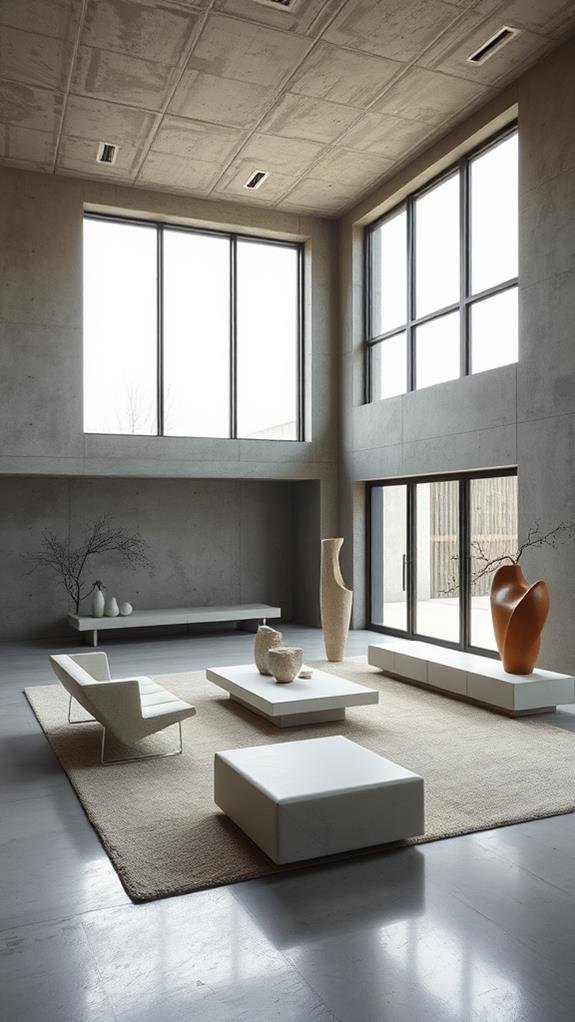
Emerging from its historical roots, the key characteristics of Brutalist interior style highlight its distinct preference for raw materials and functional design.
You’ll notice that simplicity rules here; spaces are often open and uncluttered, emphasizing a sense of honesty and authenticity.
Large, bold shapes and geometric forms create a strong visual presence, making a striking statement without being flashy.
Emphasis on utilitarianism is essential, as every piece serves a clear purpose, contributing to the overall functionality of the space.
Additionally, you might find a focus on natural lighting and the interplay of shadows, which adds depth and richness to the design.
Ultimately, Brutalism invites you to appreciate the beauty of structure and simplicity without distractions.
Raw Materials Used
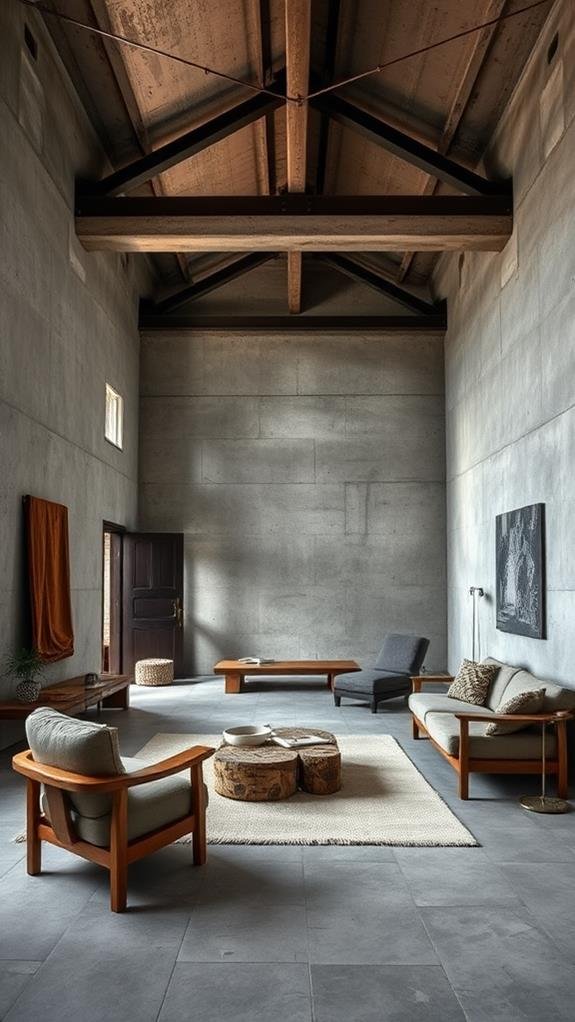
Embracing raw materials is fundamental in Brutalist interior design, where you’ll often encounter concrete, steel, and wood prominently featured.
These materials not only reflect the honesty of construction but also create a sturdy, rugged atmosphere. Concrete, with its rough texture, is frequently used for walls and flooring, giving a bold foundation to the space.
Steel elements, such as beams and furniture, introduce an industrial vibe that complements the overall aesthetic.
Meanwhile, wood adds warmth and contrasts with the coldness of concrete and metal.
By incorporating these raw materials, you can achieve a balanced blend of strength and comfort, ensuring your space feels both inviting and unapologetically modern.
Each material contributes to the story of the space, showcasing beauty in simplicity.
Color Palette
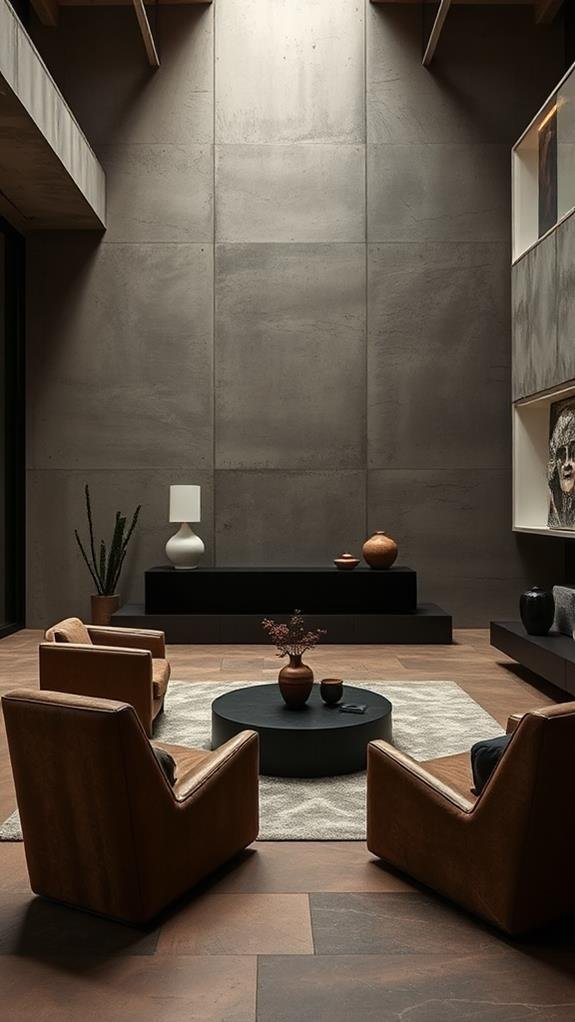
In the case of selecting a color palette for a Brutalist interior, you’ll find that neutrality reigns supreme. Earthy tones like grays, browns, and muted greens take center stage, providing a calming backdrop. These colors mirror the raw materials often used in Brutalist design, creating a sense of unity.
You might also want to incorporate some bold accents, like deep blues or warm oranges, but keep them minimal. The key is to maintain that understated elegance, avoiding anything too flashy. This color scheme emphasizes the structure and texture of your space, allowing the materials to shine.
Functional Design Principles
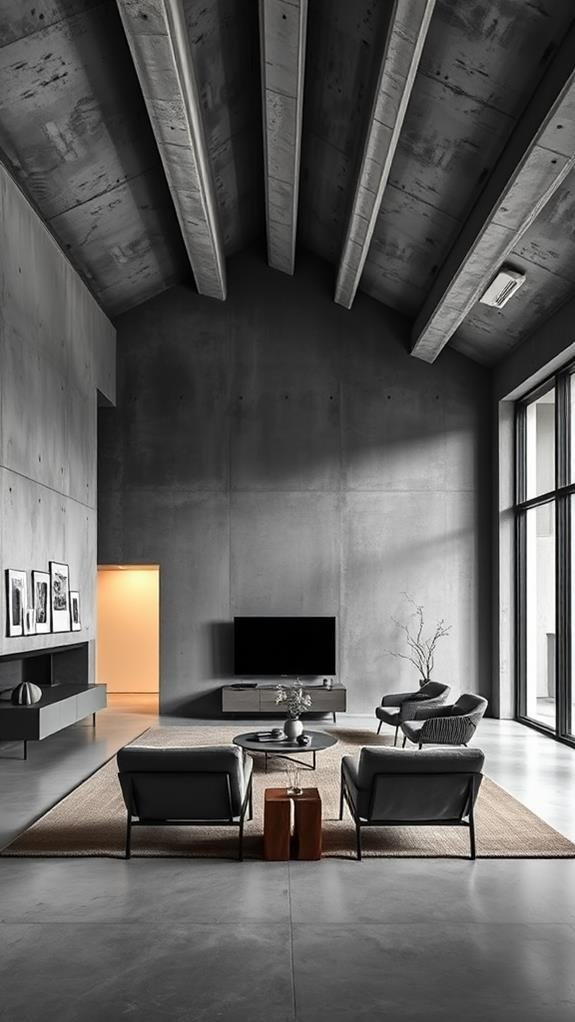
Often, functional design principles are at the heart of Brutalist interiors, emphasizing practicality without sacrificing aesthetics.
You’ll notice that furniture and layouts prioritize usability, making spaces comfortable and efficient.
Brutalist design often features large, open areas that encourage movement and interaction. The materials used, like concrete and metal, aren’t just tough; they’re also chosen for their durability and ease of maintenance.
Storage solutions are clever and built-in, keeping clutter at bay while still looking stylish. Instead of excessive decoration, the focus is on clean lines and simple forms, ensuring everything has a purpose.
This approach creates spaces where you can live, work, and relax without distraction, truly capturing the essence of form following function in design.
Modern Applications
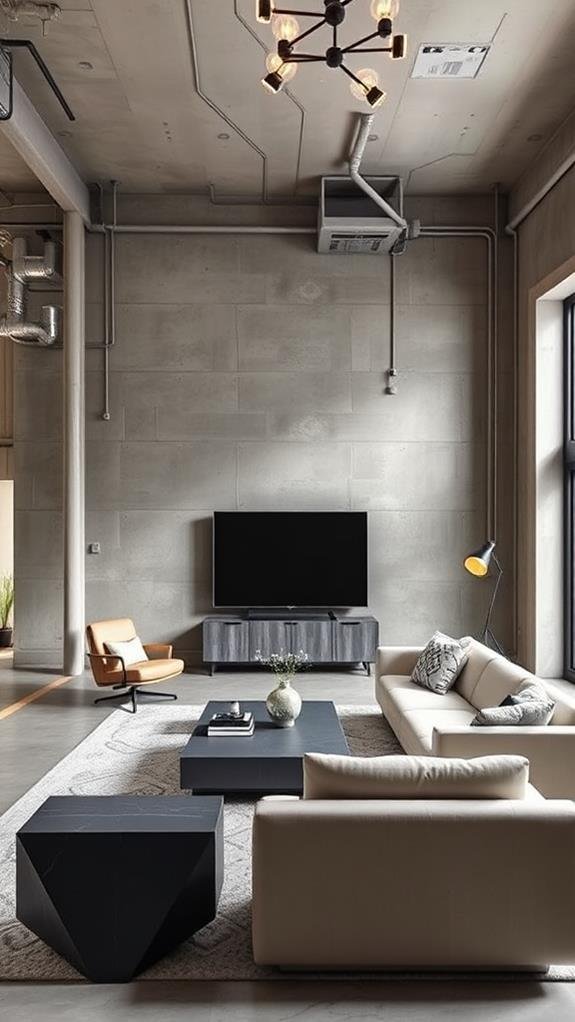
Brutalist interior style has found fresh relevance in modern applications, seamlessly blending raw materials with contemporary living. You can create a striking contrast by pairing concrete walls with warm wood accents. This balance often results in a cozy yet edgy atmosphere.
To adopt this style, consider using oversized furniture that emphasizes function while adding bold character to your space. You might also incorporate simple metal light fixtures and artwork to improve the industrial feel.
Additionally, open floor plans work well in brutalist designs, allowing natural light to flow and highlight the beauty of the materials. Remember, it’s all about accepting simplicity and honesty in design.
Conclusion
To sum up, brutalist interior style is all about embracing raw materials and functional design. By focusing on simplicity and honest craftsmanship, it creates unique and bold spaces. You’ll find this style combines concrete, metal, and wood, often highlighting their natural textures. Whether in a modern home or a public building, brutalism stands out with its striking presence. If you’re drawn to a minimal yet strong aesthetic, this style might just be the perfect fit for you!
